Granite is one of the most enduring choices for outdoor kitchen countertops. As a natural stone, it offers exceptional resistance to heat, scratches, and UV exposure, making it ideal for spaces that endure direct sunlight and fluctuating temperatures. Available in a vast spectrum of colors and patterns, granite can be tailored to nearly any design aesthetic, from sleek and modern to rustic and traditional. Proper sealing is essential, however, to protect against staining and moisture infiltration; a quality sealant applied annually will keep the surface looking pristine. Lightweight yet strong, granite slabs can support heavy appliances and frequent use, ensuring both functionality and visual appeal for years to come.
2. Quartzite
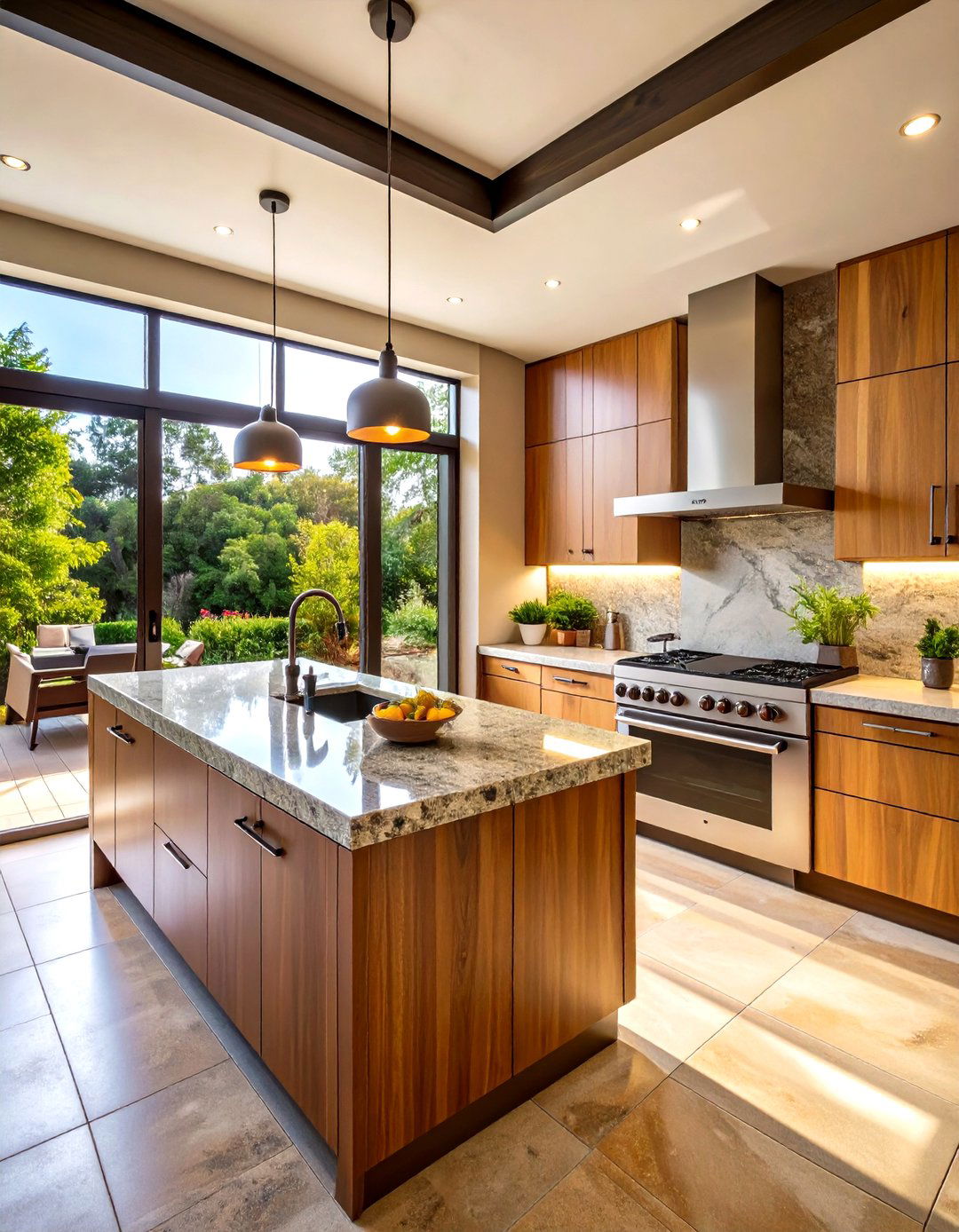
Quartzite is a natural metamorphic rock prized for its marble-like beauty combined with granite-like durability. With a typically lighter, veined appearance, quartzite resists UV fading and can handle extreme temperatures without discoloration, making it a dependable choice for outdoor kitchens. Unlike engineered quartz, natural quartzite withstands hot pots and pans directly on its surface, though periodic sealing—about once a year—is recommended to prevent staining from oils or acidic marinades. Although quartzite may cost more upfront than some other materials, its longevity and distinctive aesthetic payoff make it a smart investment for homeowners seeking a balance of elegance and performance.
3. Soapstone
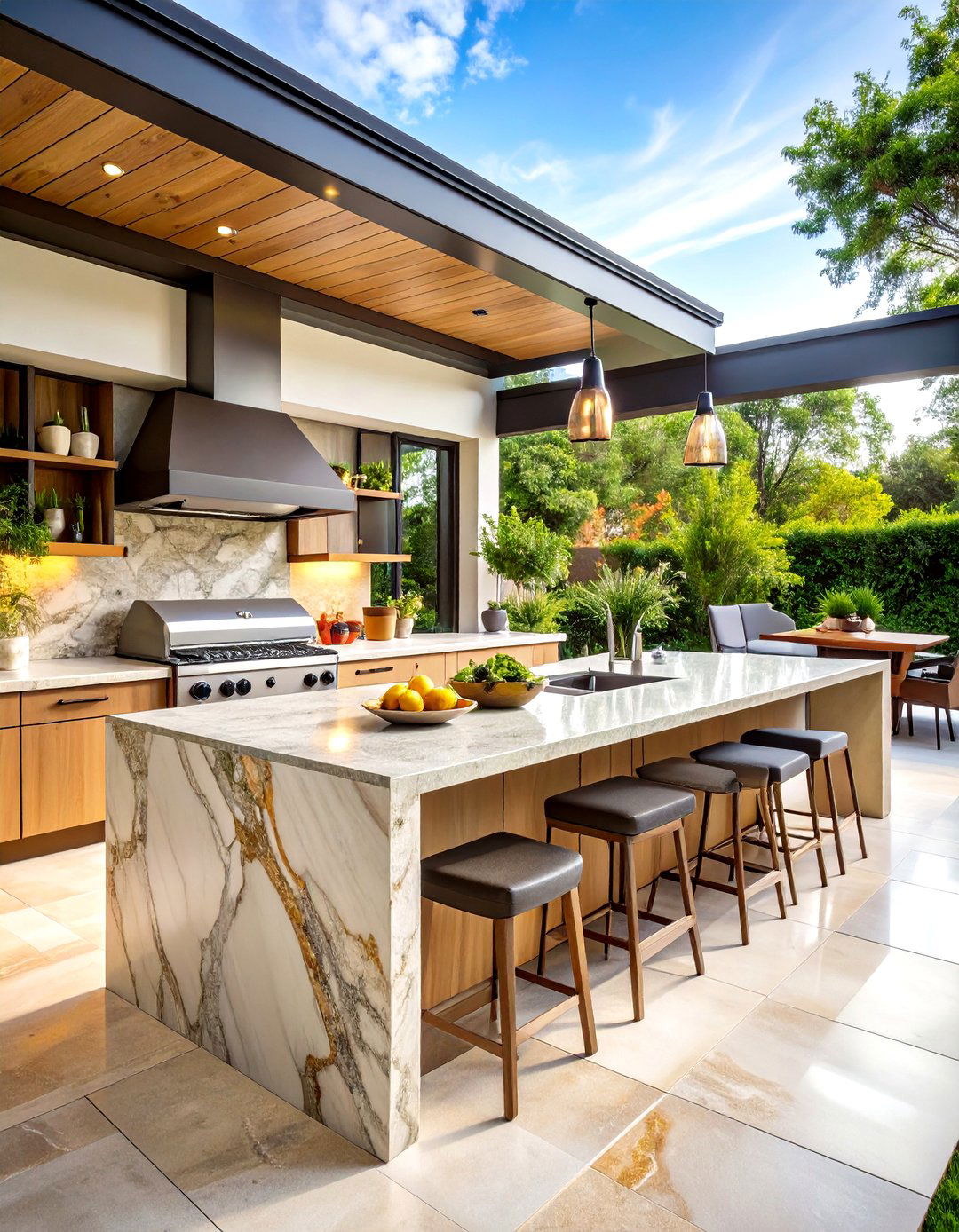
Soapstone countertops are renowned for their silky smooth feel and deep, rich color that typically ranges from dark gray to matte black. Composed almost entirely of talc, soapstone is naturally dense and non-porous, providing excellent resistance to water, acids, and stains without the need for sealing. Its high heat tolerance allows you to place hot cookware directly on the surface without fear of damage. Over time, soapstone will develop a unique patina—a soft sheen that enhances its character. While it is softer than granite and can scratch or dent, these marks can be easily sanded out, making soapstone both forgiving and functional for outdoor culinary work.
4. Marble
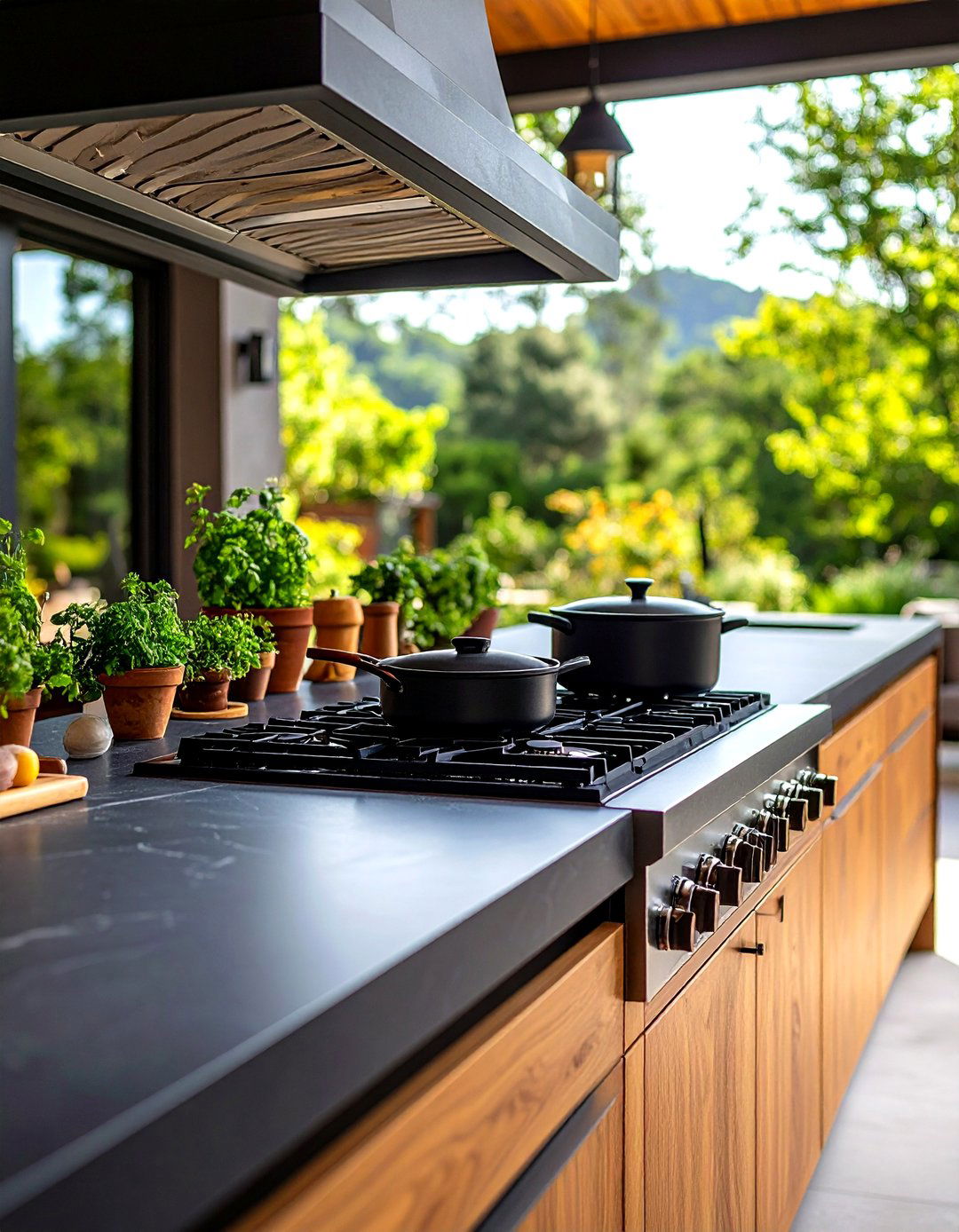
Marble lends a classic, luxurious touch to any outdoor kitchen with its signature veins and luminous finish. While generally more porous than other stones, marble can be used outdoors if properly sealed and maintained; sealing every six months helps guard against moisture and acidic substances that can etch the surface. Its cool feel underfoot or under hand makes marble especially pleasant in warm climates. However, marble is softer than granite and may scratch or chip if not handled carefully. If you’re drawn to its timeless elegance and are willing to perform occasional upkeep, marble can transform an outdoor cooking area into a sophisticated entertaining space.
5. Porcelain

Porcelain countertops are manufactured under intense heat and pressure, creating slabs that are exceptionally thin yet incredibly strong. Non-porous and nearly impervious to stains, porcelain surfaces resist UV rays, so colors remain vibrant even after prolonged sun exposure. They can mimic the look of marble, concrete, or natural stone at a fraction of the maintenance, never requiring sealing and shrugging off acidic foods and liquids. Lightweight compared to natural stone, porcelain is easier to install and can be fabricated in larger formats with minimal seams. Its hardness does make it prone to chipping on sharp impacts, but gentle handling and edge protection will ensure long-lasting performance in any outdoor setting.
6. Concrete

Concrete countertops offer unparalleled customization, allowing you to choose pigments, aggregates, and textures to create a truly one-of-a-kind surface. Cast-in-place or precast, concrete can be formed around sinks and drainboards, with integrated design elements like decorative inlays, etched patterns, or embedded stones. While naturally porous, modern sealers provide robust protection against stains and moisture; resealing every one to two years is recommended. Concrete is highly heat resistant and can withstand direct contact with hot cookware. Despite its strength, minor hairline cracks—known as crazing—can develop over time, adding to its industrial-chic appeal. Regular sealing and gentle cleaning will preserve its beauty and function outdoors.
7. Stainless Steel
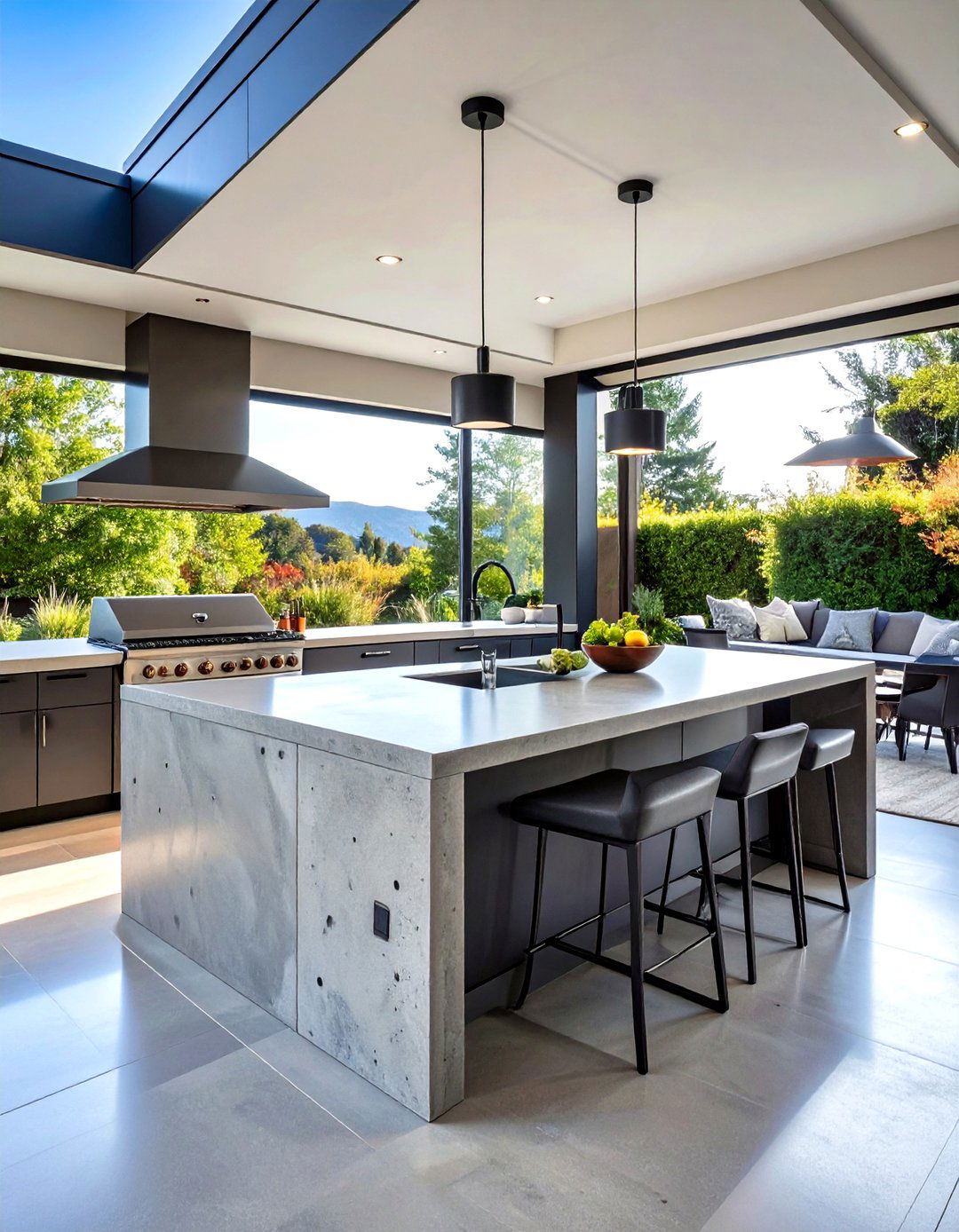
Stainless steel countertops impart a sleek, professional look reminiscent of restaurant kitchens and are prized for their hygienic, non-porous surfaces that resist bacteria growth. They handle extreme heat without damage and are impervious to UV rays, so they’ll never fade or discolor. Minimal maintenance—simply wipe with mild detergent—keeps them gleaming, though regular polishing may be needed to manage fingerprints and water spots. In coastal or highly humid environments, marine-grade stainless steel (316 series) is recommended to prevent corrosion. While durable, stainless steel can scratch and dent, so using cutting boards and avoiding heavy impacts will extend its lifespan, making it a smart choice for a modern outdoor kitchen.
8. Ceramic Tile
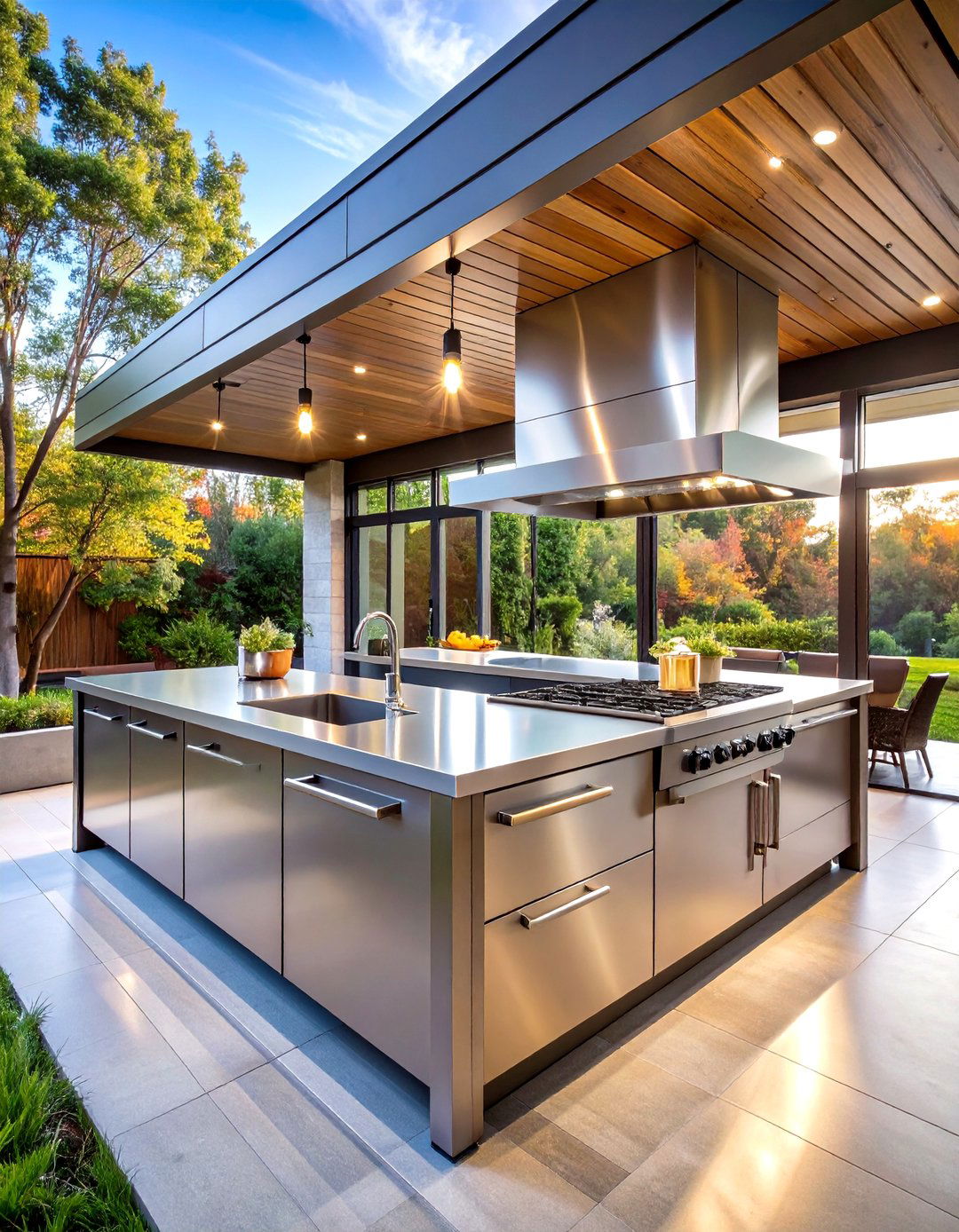
Ceramic tile is a cost-effective option that allows endless design possibilities through variations in color, pattern, and grout width. Its glazed surface repels stains and is easy to clean, while individual tile replacements can address any damaged sections without extensive work. However, grout lines require periodic resealing to prevent mold and mildew in damp conditions, and tiles can crack under heavy impacts or freeze-thaw cycles in colder climates. Proper substrate installation and choosing frost-resistant tiles are crucial for durability. For a cohesive, handcrafted look, consider large-format porcelain tiles with minimal grout lines—combining the aesthetic flexibility of tile with the performance benefits of porcelain for outdoor use.
9. Recycled Glass
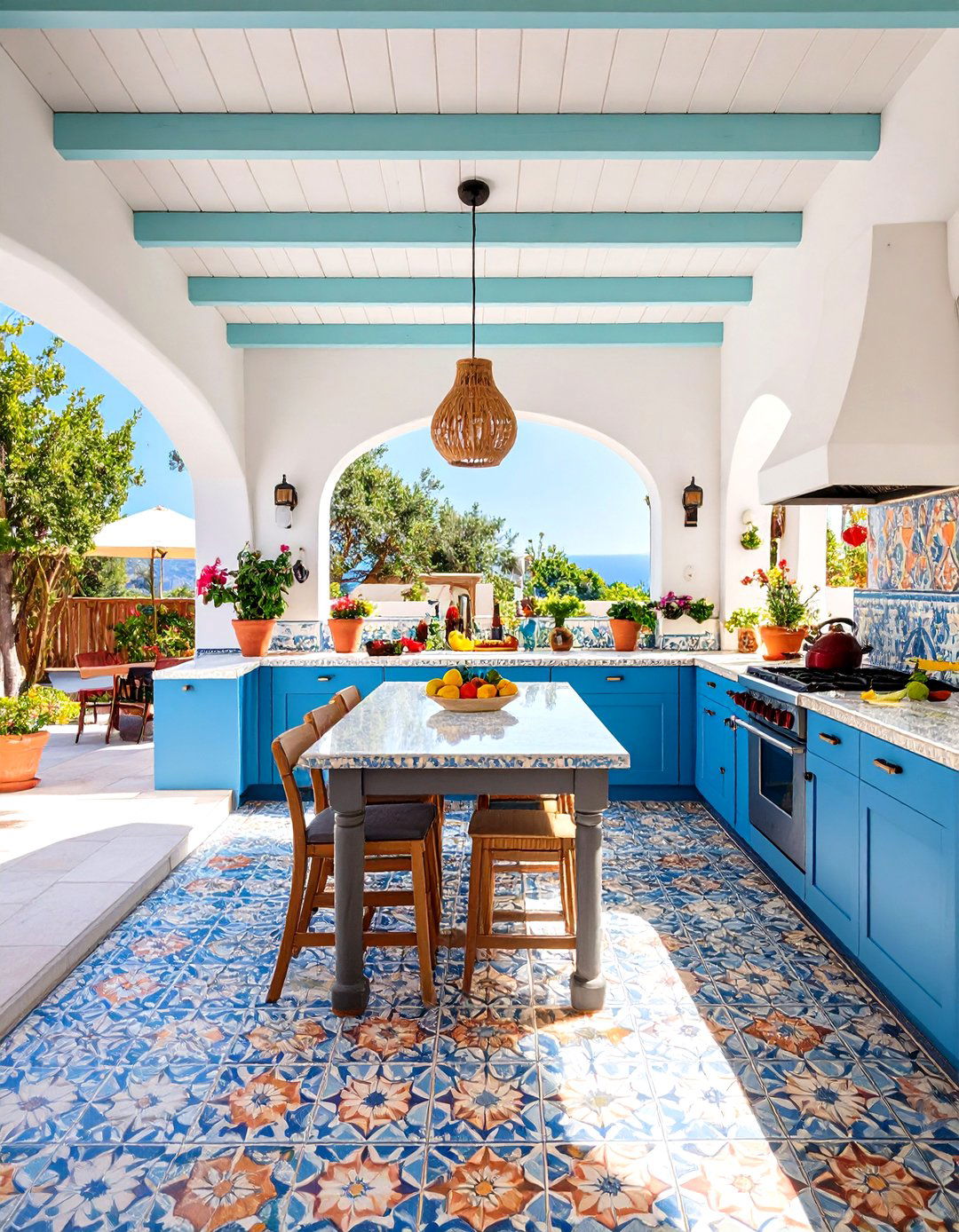
Recycled glass countertops blend post-consumer glass fragments—often from bottles, windows, or auto windshields—with cement or resin binders, producing vibrant, terrazzo-like surfaces. These eco-friendly slabs are non-porous, stain-resistant, and highly UV-stable, ensuring colors remain vivid under sunlight. Glass countertops can be backlit for striking visual impact, and their unique blend of colors guarantees no two slabs are identical. They resist heat and scratching but may chip on hard impacts. While typically more expensive than granite or concrete, the sustainable credentials and dazzling aesthetics of recycled glass make it an eye-catching focal point for any outdoor kitchen seeking both durability and environmental responsibility.
10. Lava Stone
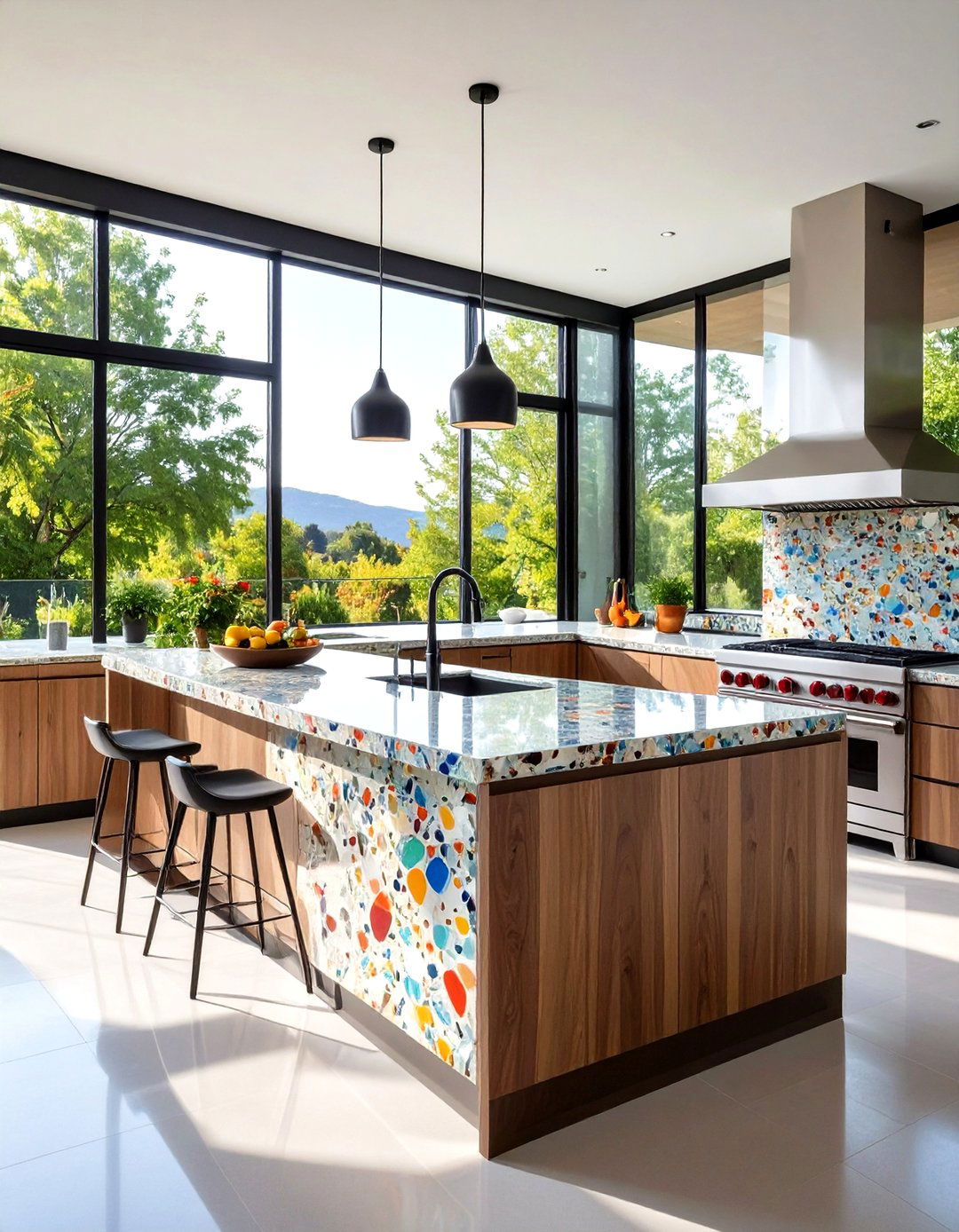
Lava stone countertops are crafted from hardened volcanic rock, often glazed at high temperatures to form a non-porous, bacteria-resistant surface. Available in a spectrum from matte to high gloss finishes, lava stone withstands extreme heat, harsh weather, and UV exposure without fading or cracking. Its unique texture provides natural slip resistance, making it well-suited for outdoor bars and prep areas. Although premium pricing—ranging from $250 to $300 per square foot—reflects its rarity and shipping costs from volcanic regions, lava stone’s long lifespan and minimal maintenance (no sealing required) offer a hassle-free option for a statement-making outdoor countertop.
11. Slate
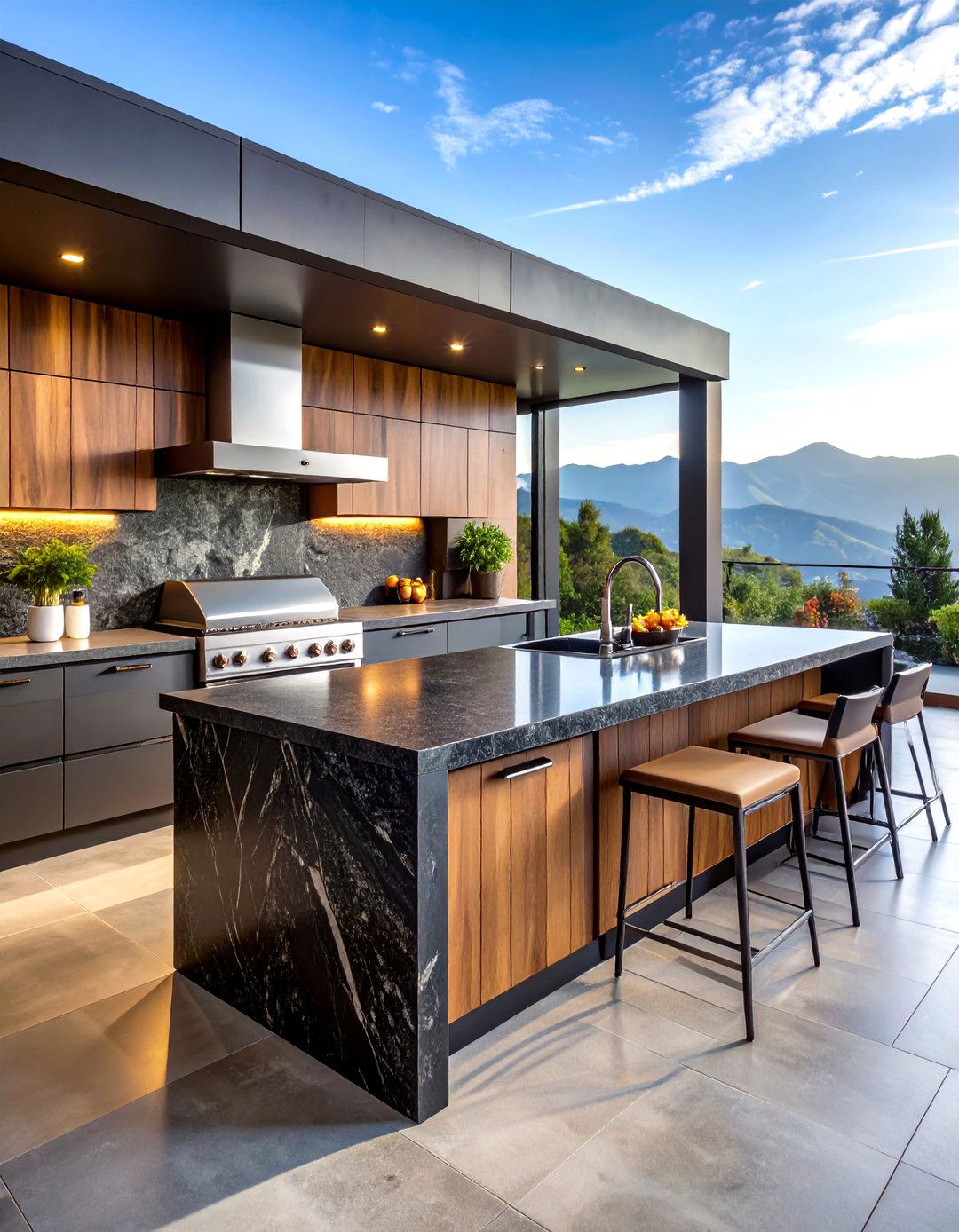
Slate countertops bring a muted, natural palette of grays, blacks, and blues to outdoor kitchens, with a smooth yet slightly textured surface that repels stains and moisture. This fine-grained metamorphic rock is inherently non-porous and requires little to no sealing in many climates, although a periodic coat of cleat or sealant can enhance stain resistance. Slate resists heat and scratching, making it suitable for direct contact with hot cookware and everyday use. Its natural cleft finish provides subtle variation between slabs, and its cool touch under hand is especially comfortable in warm outdoor environments. Proper installation on a stable substrate is key to preventing edge chipping over time.
12. Limestone
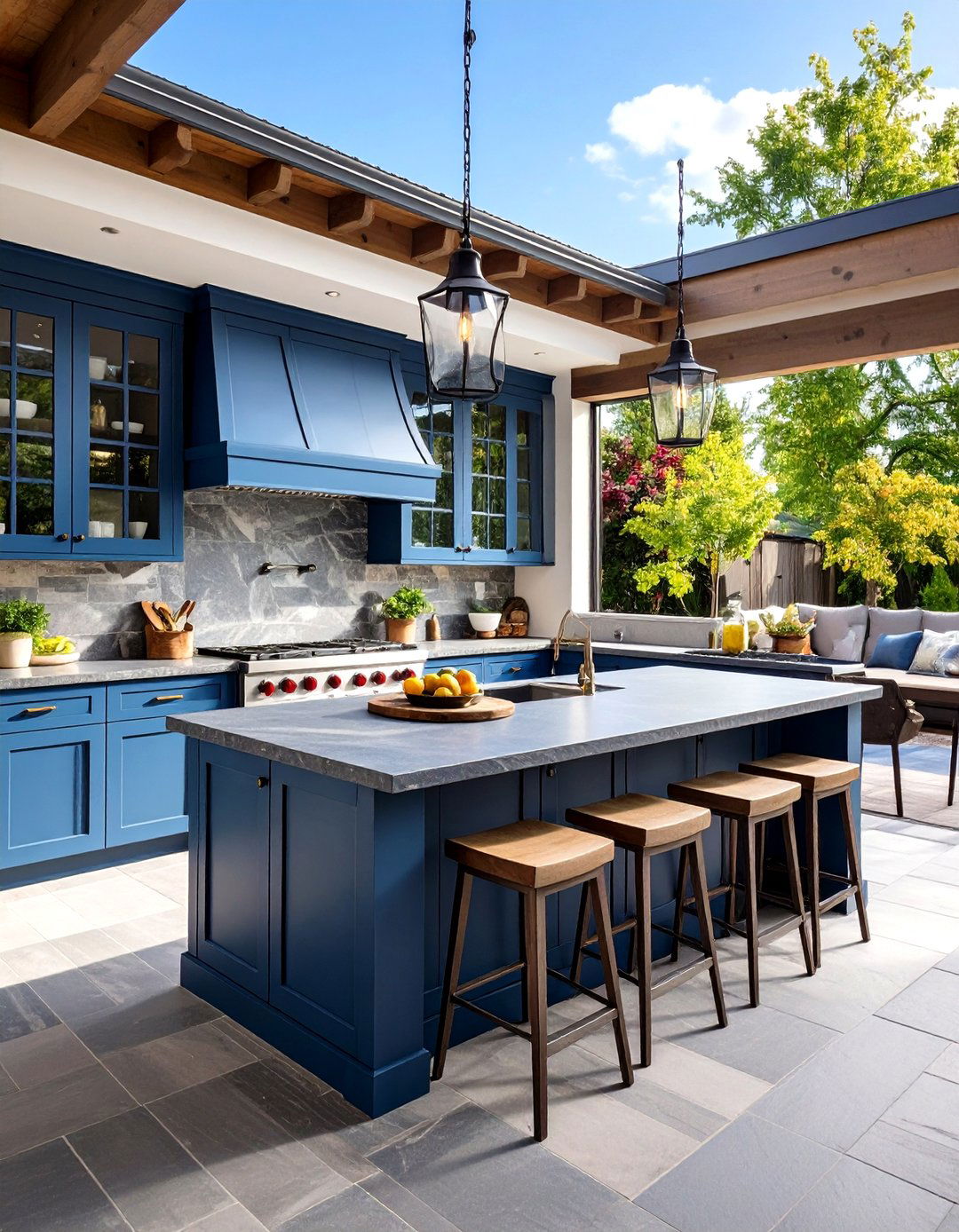
Limestone offers a warm, earthy aesthetic with soft creams, beiges, and taupe hues that complement natural landscapes. As a calcite-based sedimentary rock, limestone is more porous than granite or slate and benefits from regular sealing—typically annually—to protect against moisture, staining, and etching from acidic foods. Its heat resistance makes it safe for hot pots, but avoid placing extremely hot items directly on the surface to prevent discoloration. Limestone’s softer composition means minor scratches or patina develop gracefully, lending a rustic charm. In climates without severe freeze-thaw cycles, properly sealed limestone provides a timeless, elegant countertop choice for outdoor kitchens.
13. Butcher Block
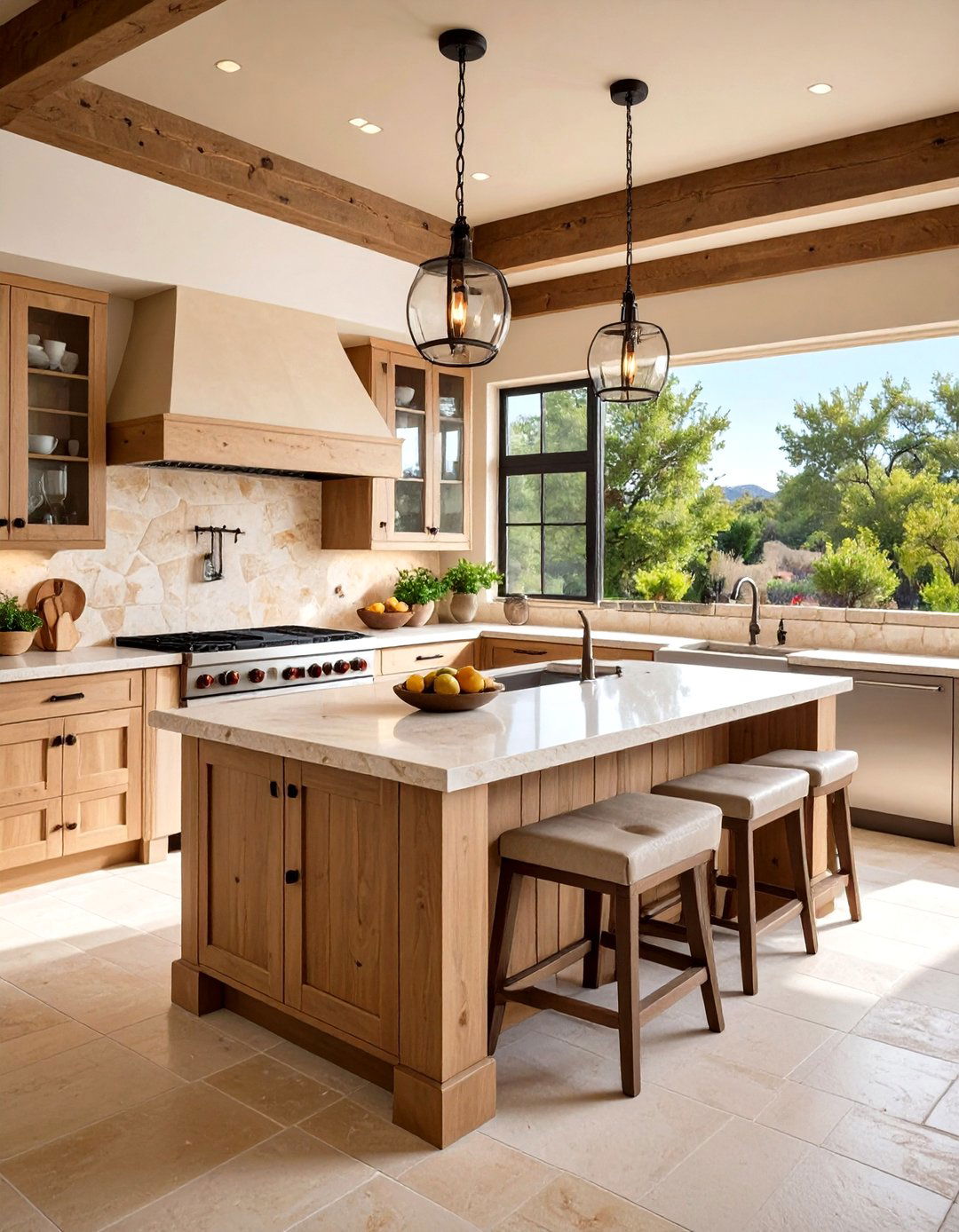
Butcher block countertops—crafted from strips of hardwood such as maple, oak, or teak—bring a warm, inviting look to outdoor kitchens. When sealed and maintained with mineral oil or specialized wood sealants, these surfaces resist moisture and provide a forgiving cutting surface for food prep. Teak in particular offers natural oils that enhance water resistance and weather tolerance. Over time, the wood may develop character marks and patina, which many homeowners find adds to its rustic appeal. Regular oiling protects against cracking and warping, and any scratches can be sanded out. Ideal for prep zones rather than areas of heavy moisture or direct rain exposure, butcher block introduces natural warmth to outdoor culinary spaces.
14. Basalt
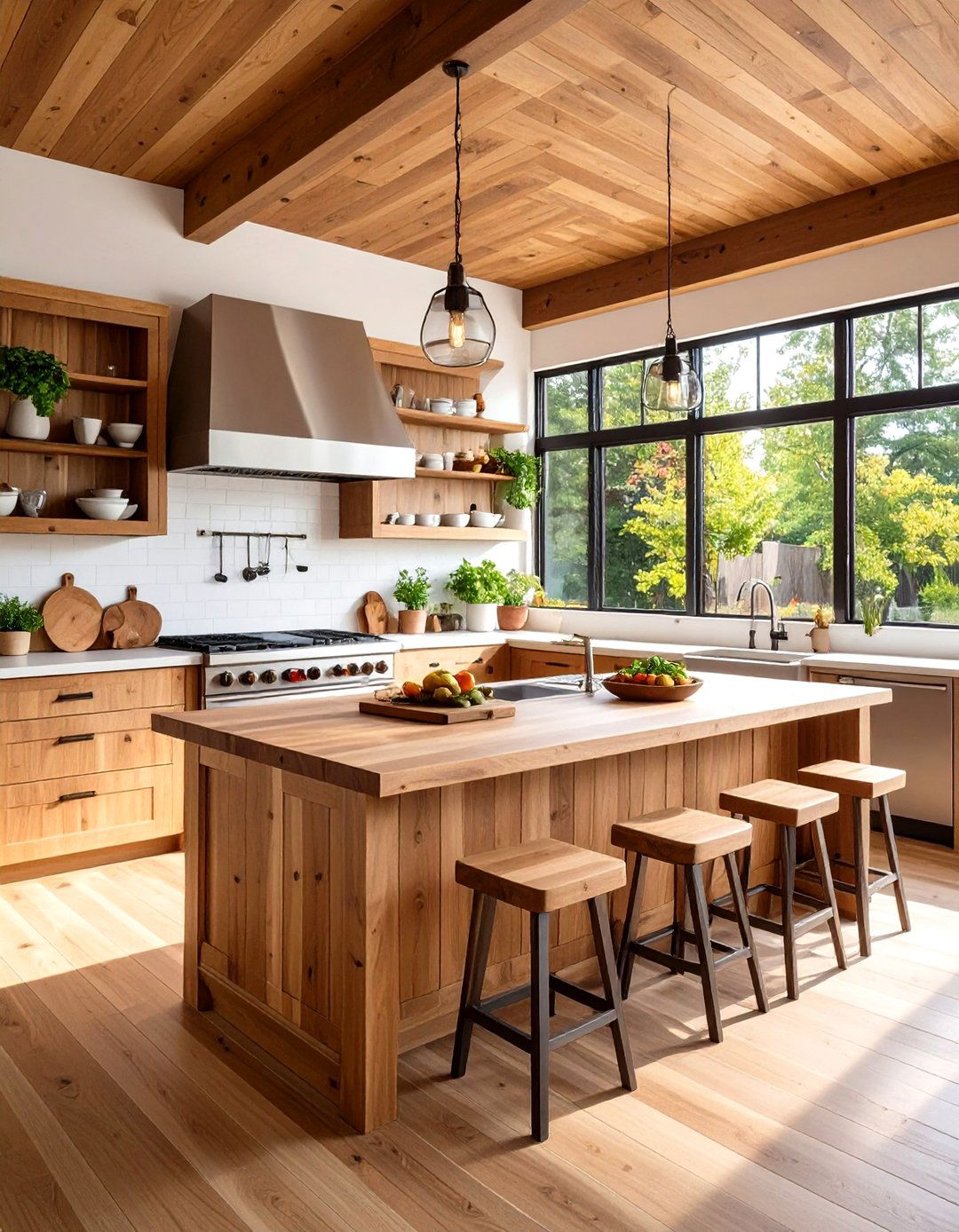
Basalt is a dense volcanic rock similar to granite in hardness but typically darker in tone, ranging from charcoal to jet black. Natural basalt slabs are quarried, cut, and sometimes acid-washed or polished to reveal subtle crystalline textures. Highly resistant to heat, UV exposure, and moisture—without requiring sealing—basalt stands up to heavy outdoor use and harsh weather cycles. Its dense composition makes it less prone to scratching than softer stones, and its dark color conceals minor wear. Basalt’s dramatic, almost industrial appearance works particularly well in contemporary outdoor kitchens, providing a sleek backdrop for stainless steel appliances and vibrant accent hues.
15. Zinc

Zinc countertops bring a distinctive metallic, matte finish that oxidizes over time to develop a soft, vintage patina. Naturally antimicrobial and cool to the touch, zinc is easy to clean with mild soap and water. While zinc can scratch or dent under heavy impact, these marks can be sanded and buffed out, then allowed to re-patinate for a custom, lived-in look. Resistant to UV light and moisture, zinc performs well outdoors with minimal protective coatings. However, its cost—often $150 to $200 per square foot—reflects the expense of thick, pure metal sheeting. For a unique, ever-evolving surface, zinc offers both form and function in al fresco kitchens.
16. Terrazzo
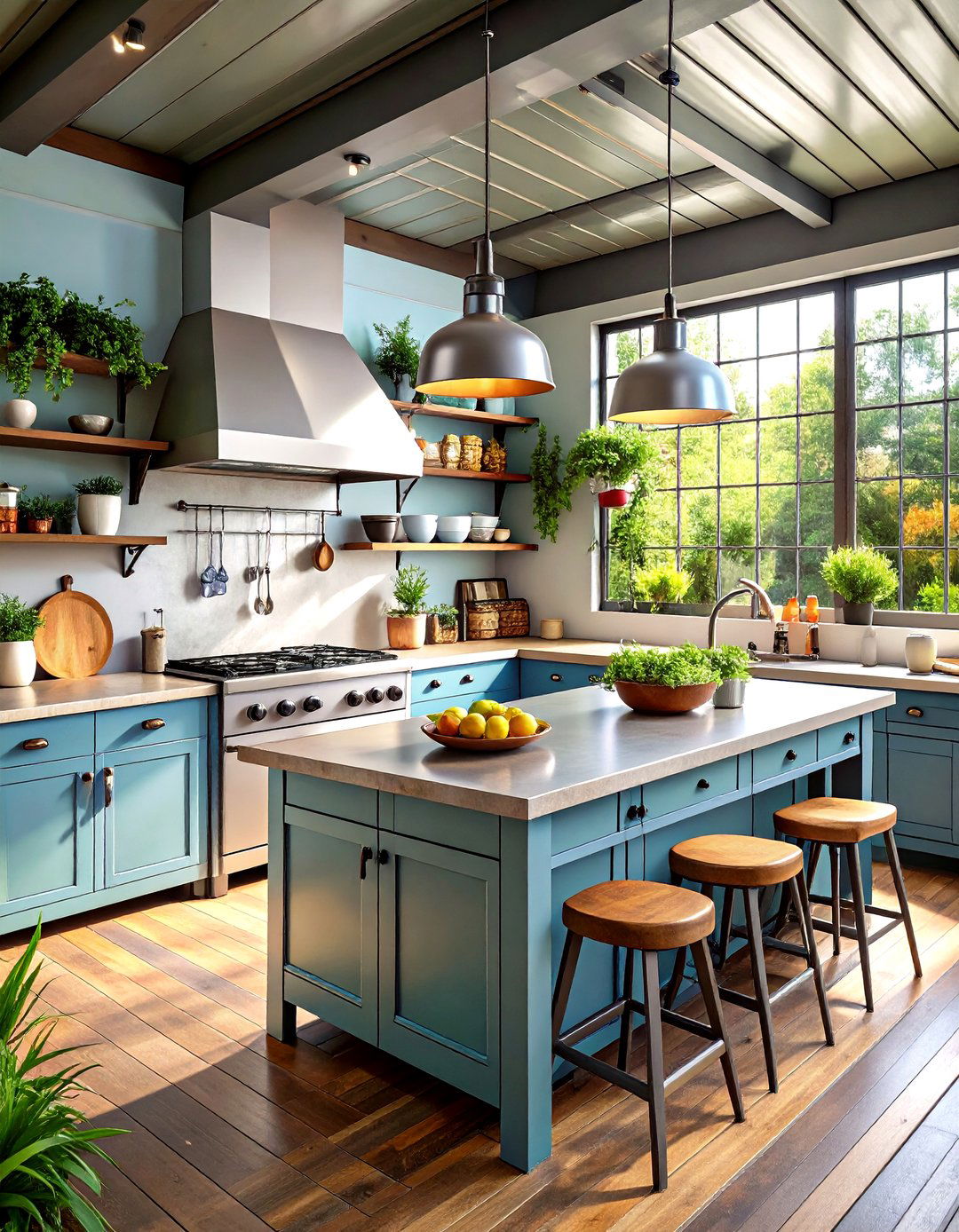
Terrazzo countertops blend chips of marble, glass, quartz, or granite set within a cement or resin matrix, then ground and polished to reveal a smooth, speckled surface. Modern resin-based terrazzo for outdoor use offers superior UV stability and non-porosity, eliminating the need for regular sealing. With an almost infinite palette of aggregate sizes and colors, terrazzo can reflect landscape hues or bold design accents. Its durability rivals natural stone, resisting heat, stains, and scratches. Although installation requires professional fabrication and polishing, terrazzo’s customizability and performance make it an artful, long-lasting countertop solution that marries sustainability—when using recycled aggregates—with enduring style.
17. Tempered Glass

Tempered glass countertops create a sleek, contemporary look with high-gloss, translucent surfaces that reflect light and open up outdoor spaces. Manufactured by heating annealed glass and rapidly cooling it, tempered glass is four to five times stronger than standard glass, resisting heat up to “soft” cooking temperatures and warding off stains without sealing. It is non-porous and hygienic, requiring only simple cleaning with glass cleaners or mild soap. While glass can crack under extreme point impacts, tempered glass shatters into pebble-like fragments, reducing hazards. For added safety, choose laminated glass with an interlayer that holds shards in place, making it a radiant—but careful—choice for al fresco kitchens.
18. High-Density Polyethylene (HDPE)
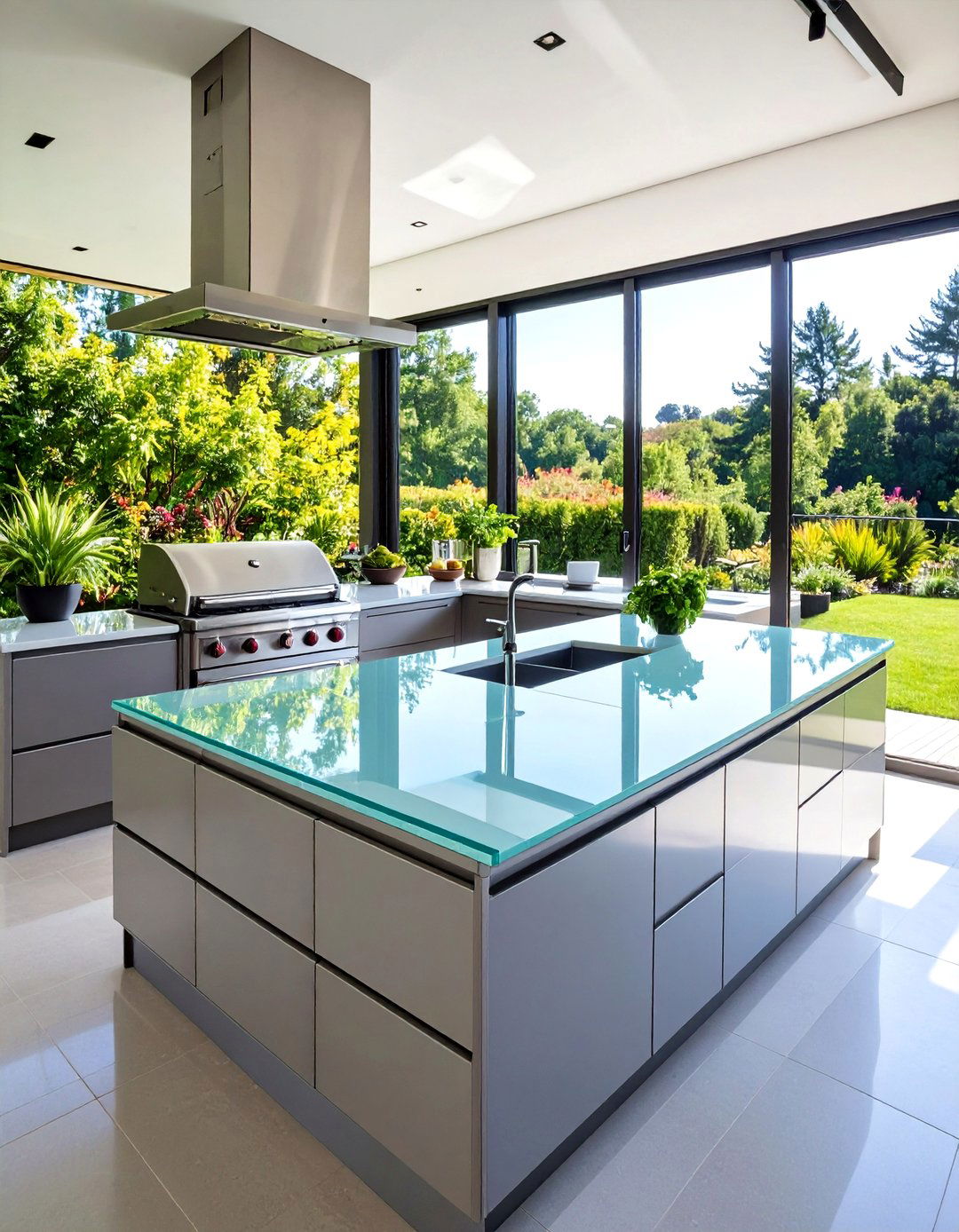
HDPE is a rugged, food-safe plastic known for its impact resistance, UV stability, and zero water absorption—essential for outdoor countertops exposed to rain and spills. FDA-approved for direct food contact, HDPE surfaces won’t warp, rot, or crack, even under heavy use. Available in a wide array of colors and finishes, HDPE sheets can be fabricated into seamless countertops with integrated drainboards. Maintenance is minimal: a routine wipe with soapy water keeps surfaces clean and sanitary. While not as heat tolerant as stone (use trivets), HDPE’s durability, lightweight nature, and long-term color retention make it a practical, low-maintenance choice for family-friendly outdoor cooking areas.
19. Microcement
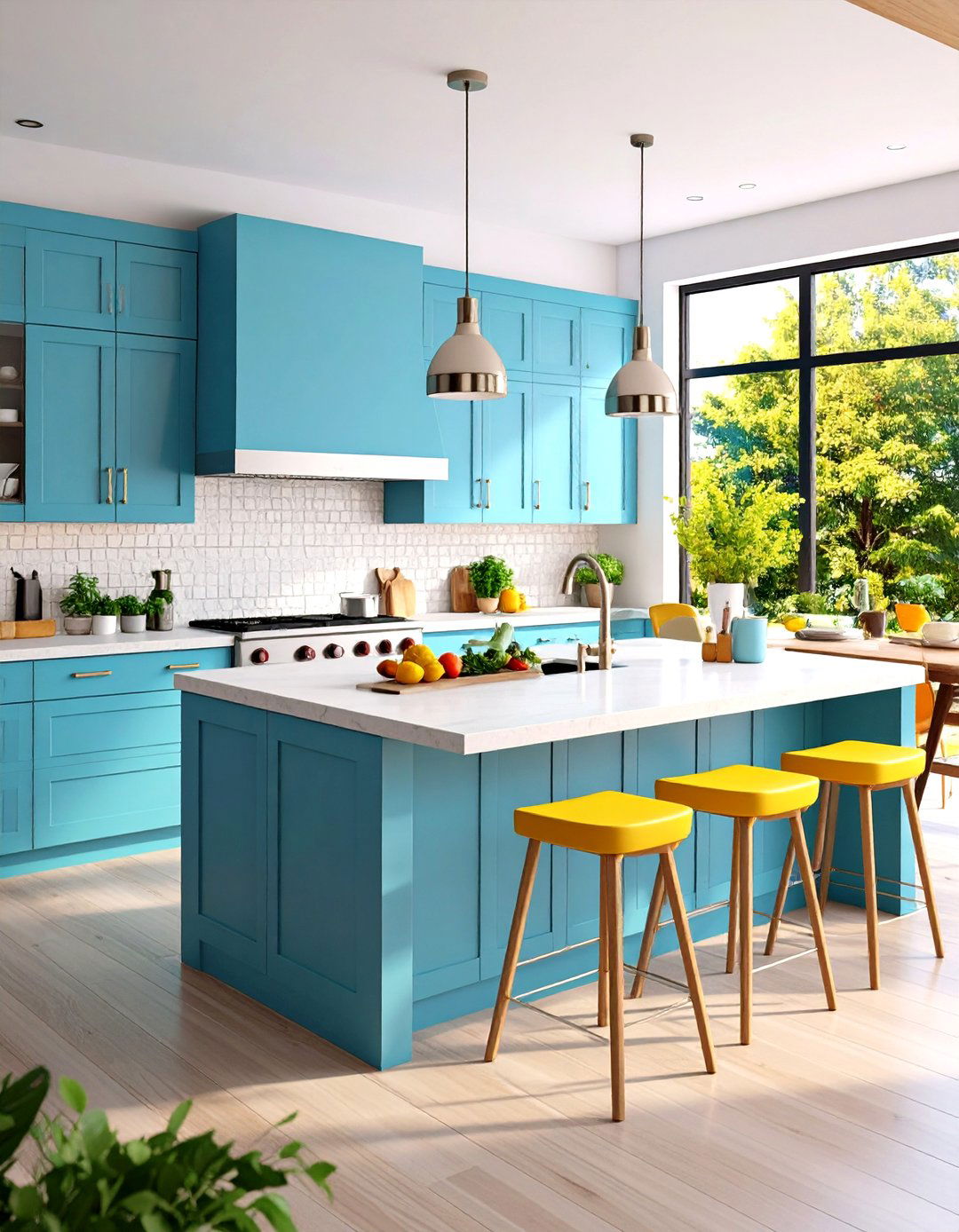
Microcement consists of a thin layer of cement-based overlay reinforced with polymers, offering a seamless, joint-free finish that mimics poured concrete. Applied over stable substrates, microcement is waterproof, UV-stable, and heat-resistant—ideal for outdoor countertops where seamless design and easy drainage matter. Its ultra-thin profile (2–3 mm) adds minimal height, making it suitable for retrofits. Available in an endless palette of colors and textures, microcement can achieve sleek modern or rustic troweled looks, integrating backsplashes and floors for a cohesive aesthetic. Although professional application yields the best results—avoiding cracks—properly installed microcement delivers a durable, virtually maintenance-free surface for contemporary alfresco kitchens.
20. Outdoor-Rated Quartz

Outdoor-rated quartz surfaces, such as Caesarstone’s Outdoor Collection, combine engineered quartz’s non-porous, stain- and scratch-resistant properties with UV-stable resins formulated specifically for exterior environments. These slabs resist temperatures from -13°F to 122°F without discoloration or degradation, and never require sealing. With a variety of calibrated hues and patterns, outdoor quartz offers a sleek, uniform appearance that complements both modern and traditional outdoor kitchens. The consistency of engineered quartz ensures minimal variation between slabs, facilitating large, seamless installations. Home cooks benefit from its smooth, hygienic surface—ideal for prep—and its resilience against weather ensures lasting beauty and functionality.
Conclusion:
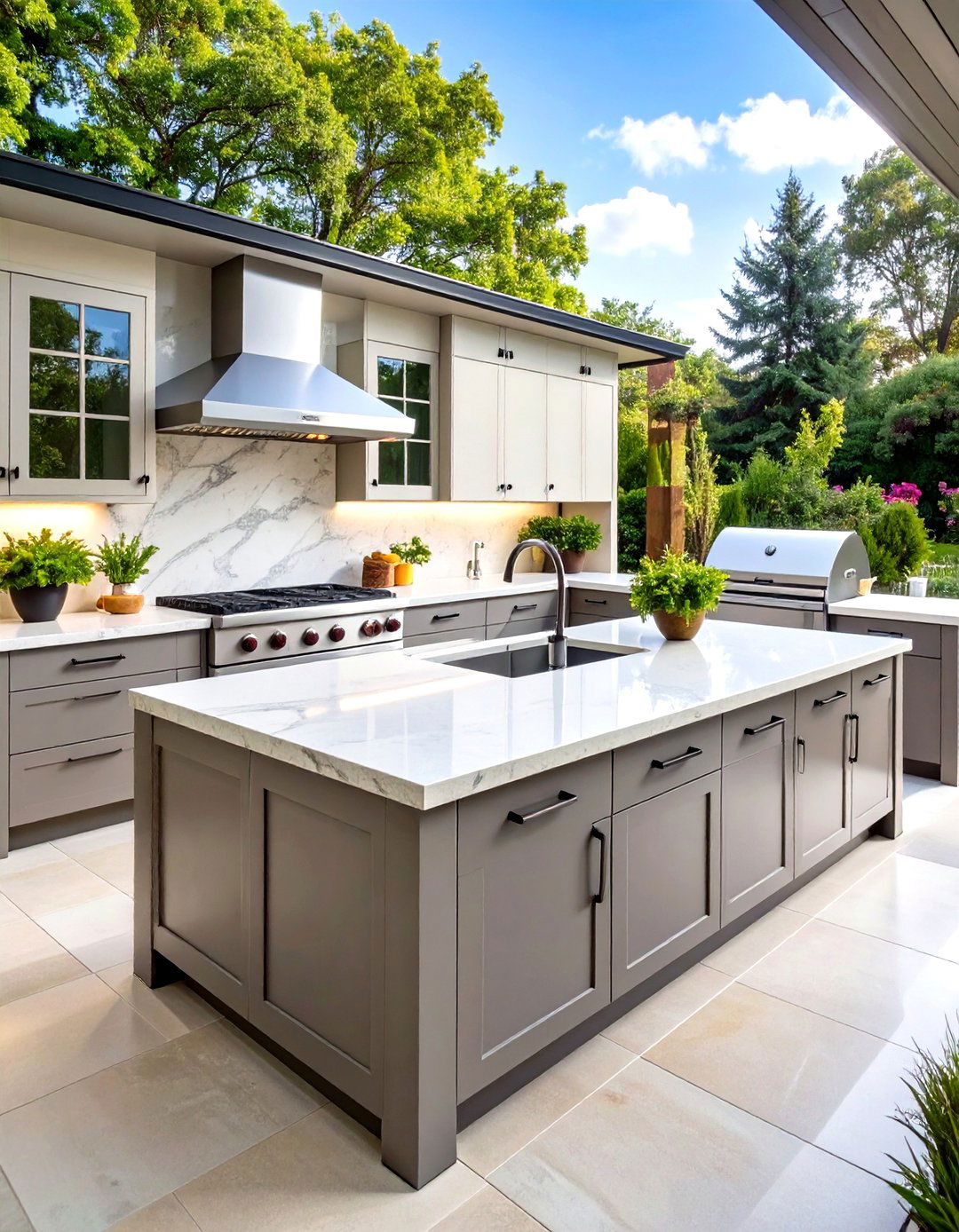
Selecting the right countertop material for your outdoor kitchen hinges on balancing aesthetics, durability, maintenance, and budget. From timeless natural stones like granite, quartzite, and soapstone to innovative options such as recycled glass, tempered glass, and microcement, each material brings unique benefits and character. Metals like stainless steel and zinc impart a sleek, professional look, while HDPE offers low-maintenance practicality. Bold choices like lava stone and terrazzo deliver dramatic visual impact, and traditional materials like butcher block and limestone evoke warm, rustic charm. By understanding each option’s strengths and care requirements, you can create an outdoor culinary space that seamlessly integrates with your lifestyle, withstands the elements, and remains inviting for years to come.


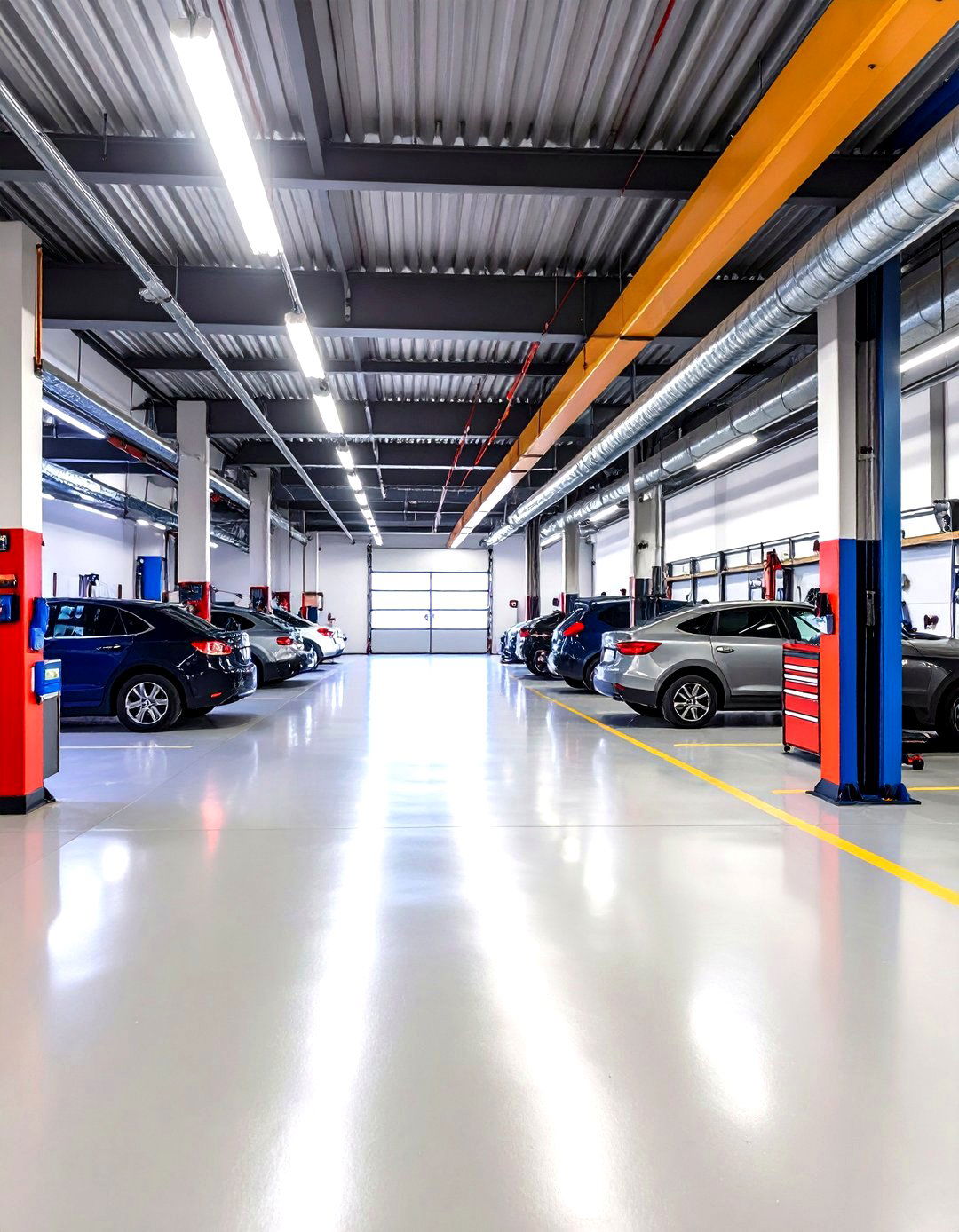
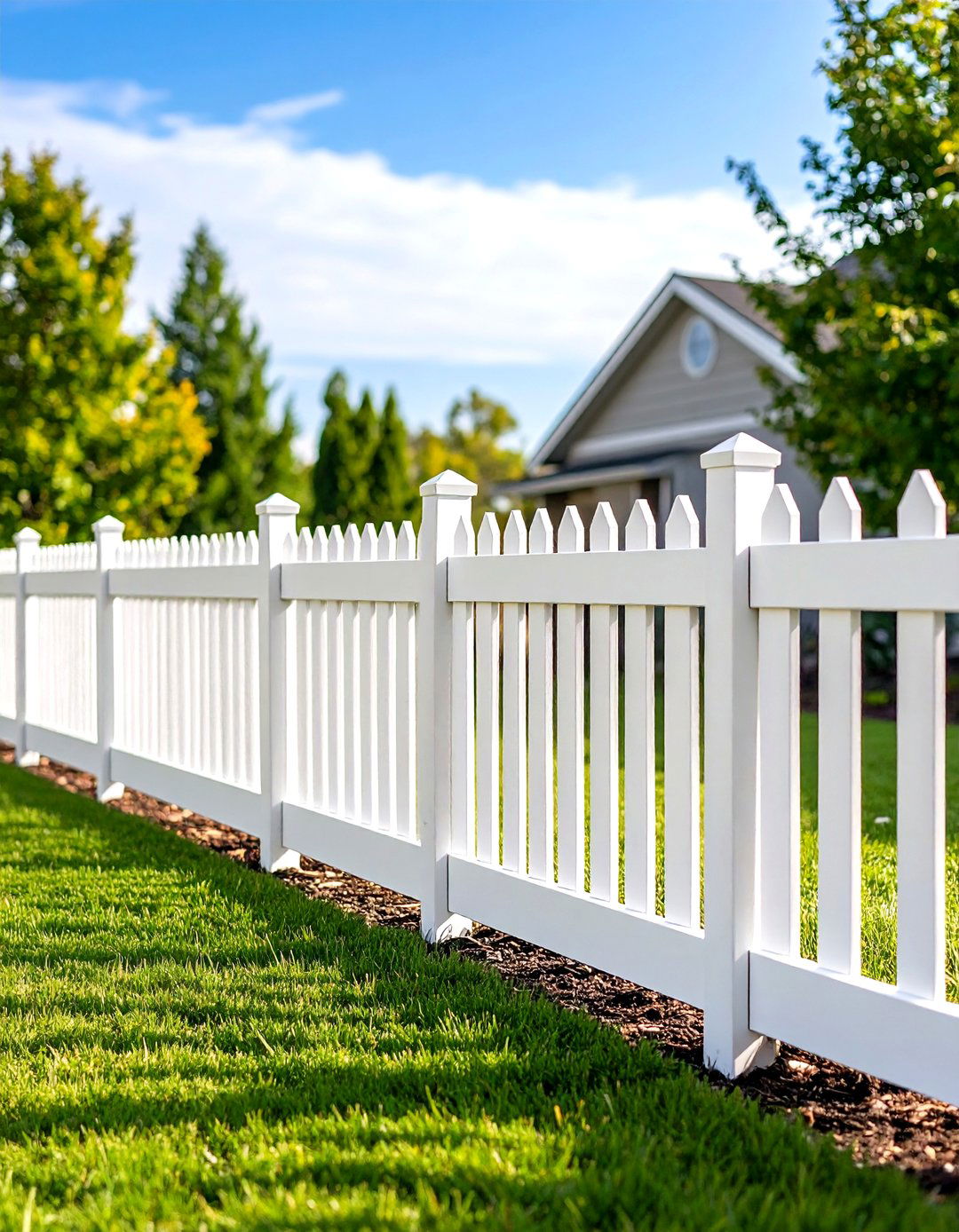
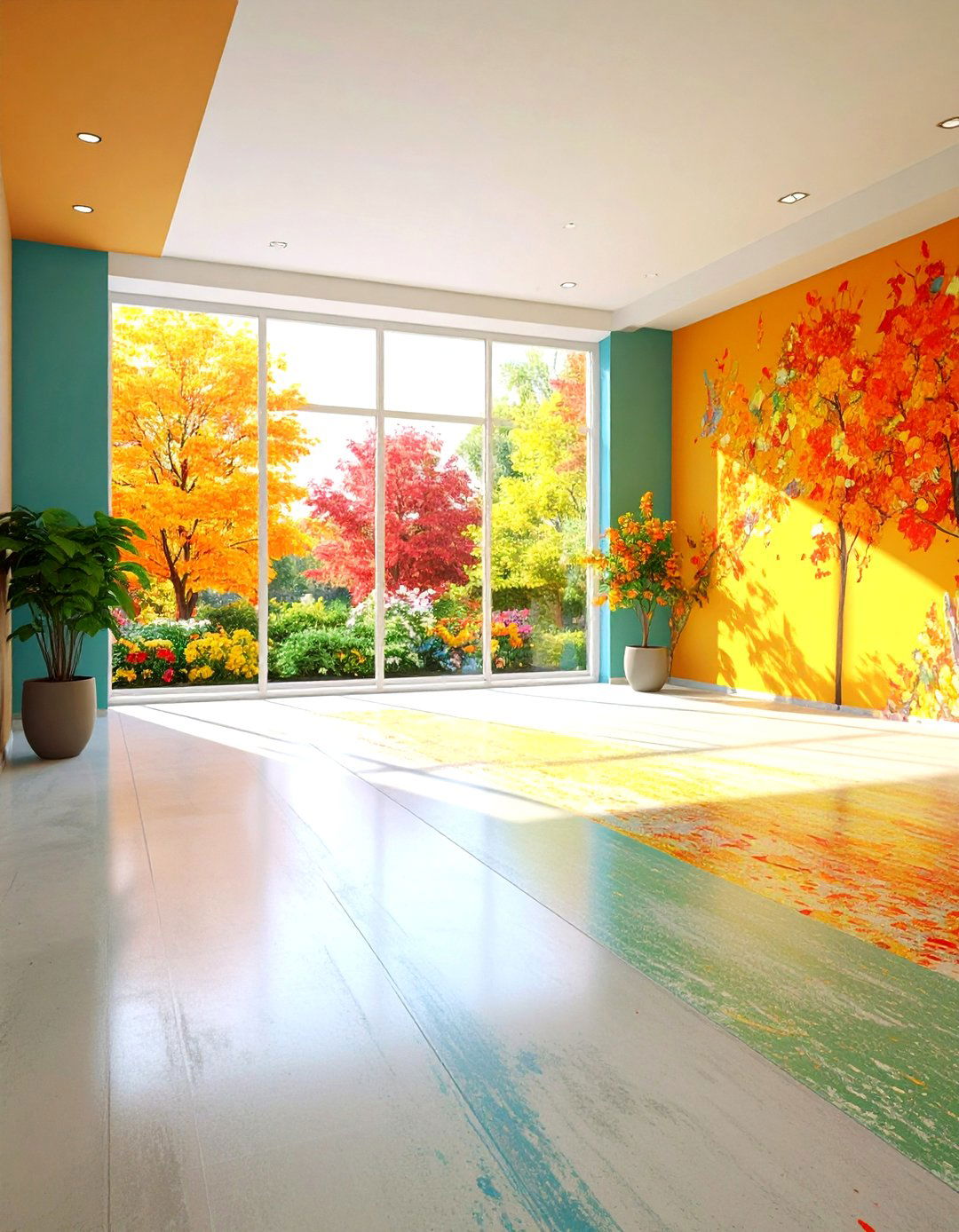
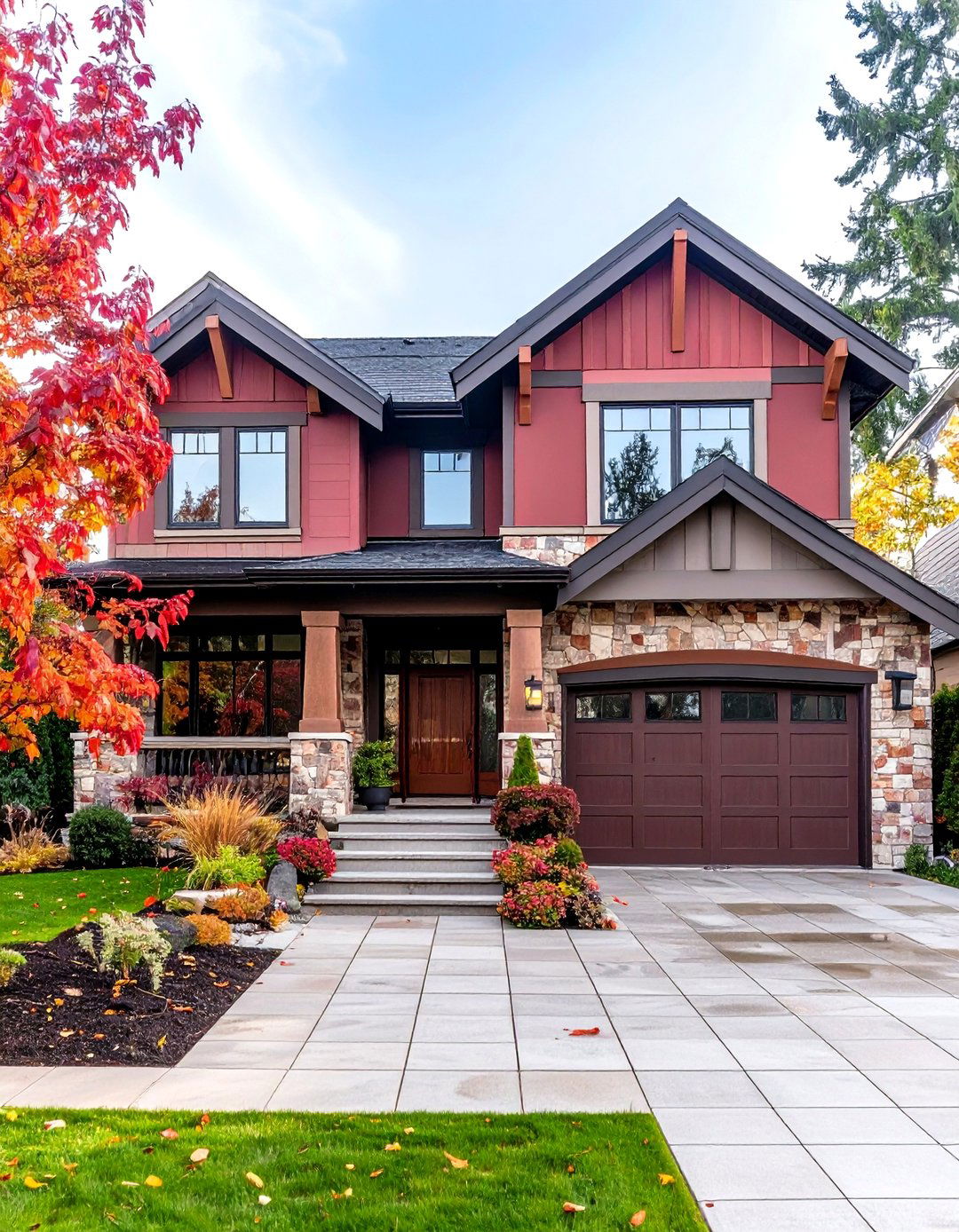
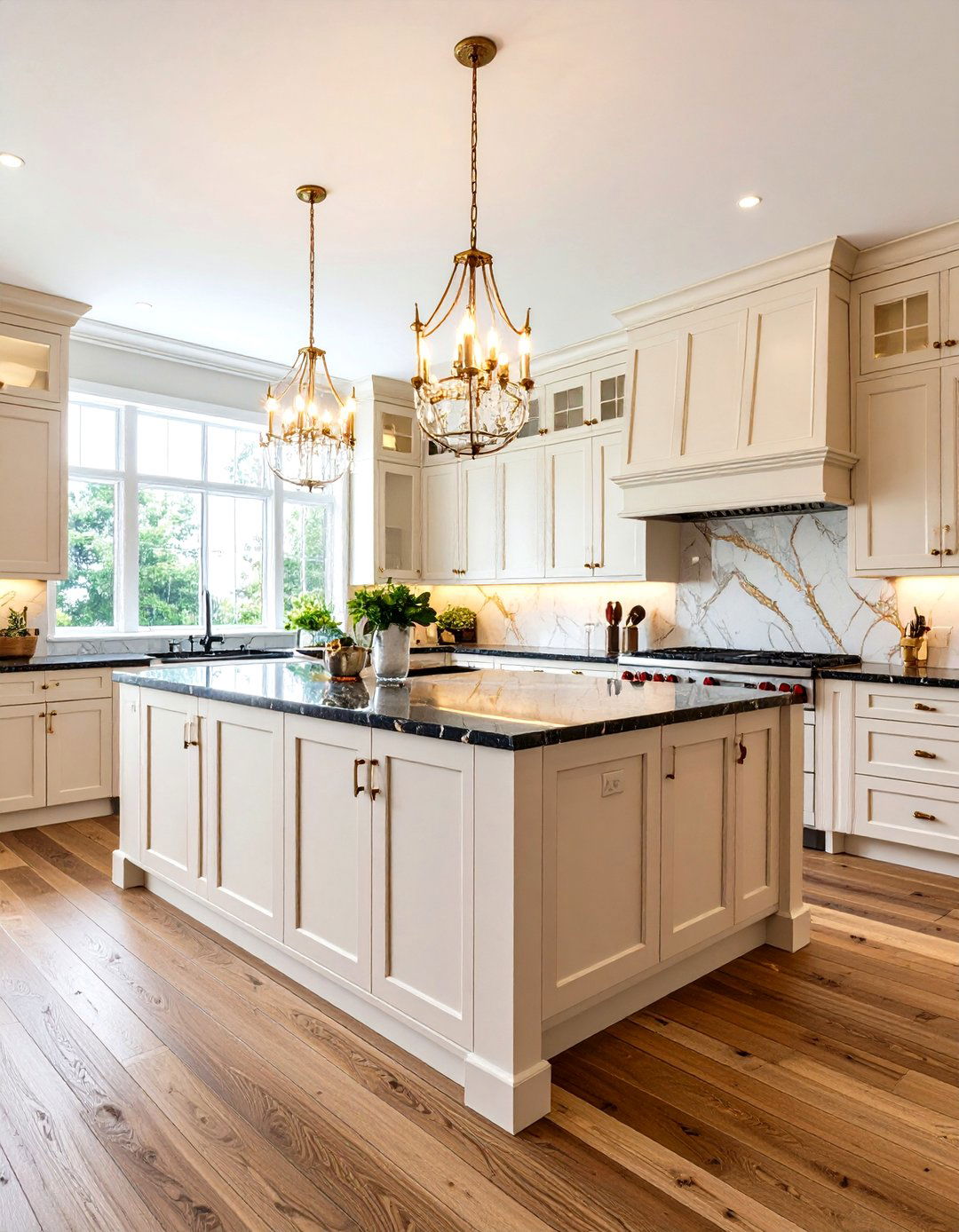
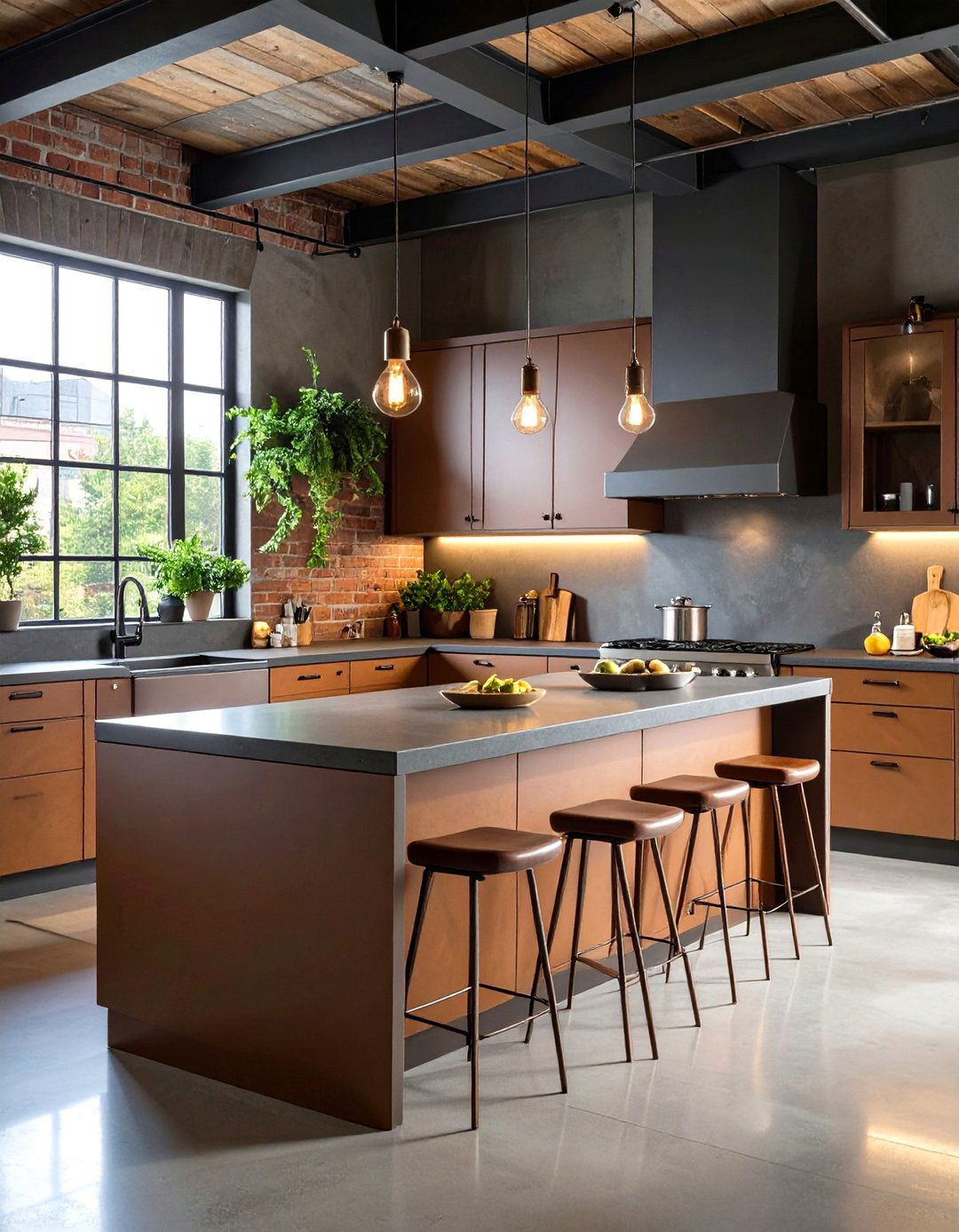
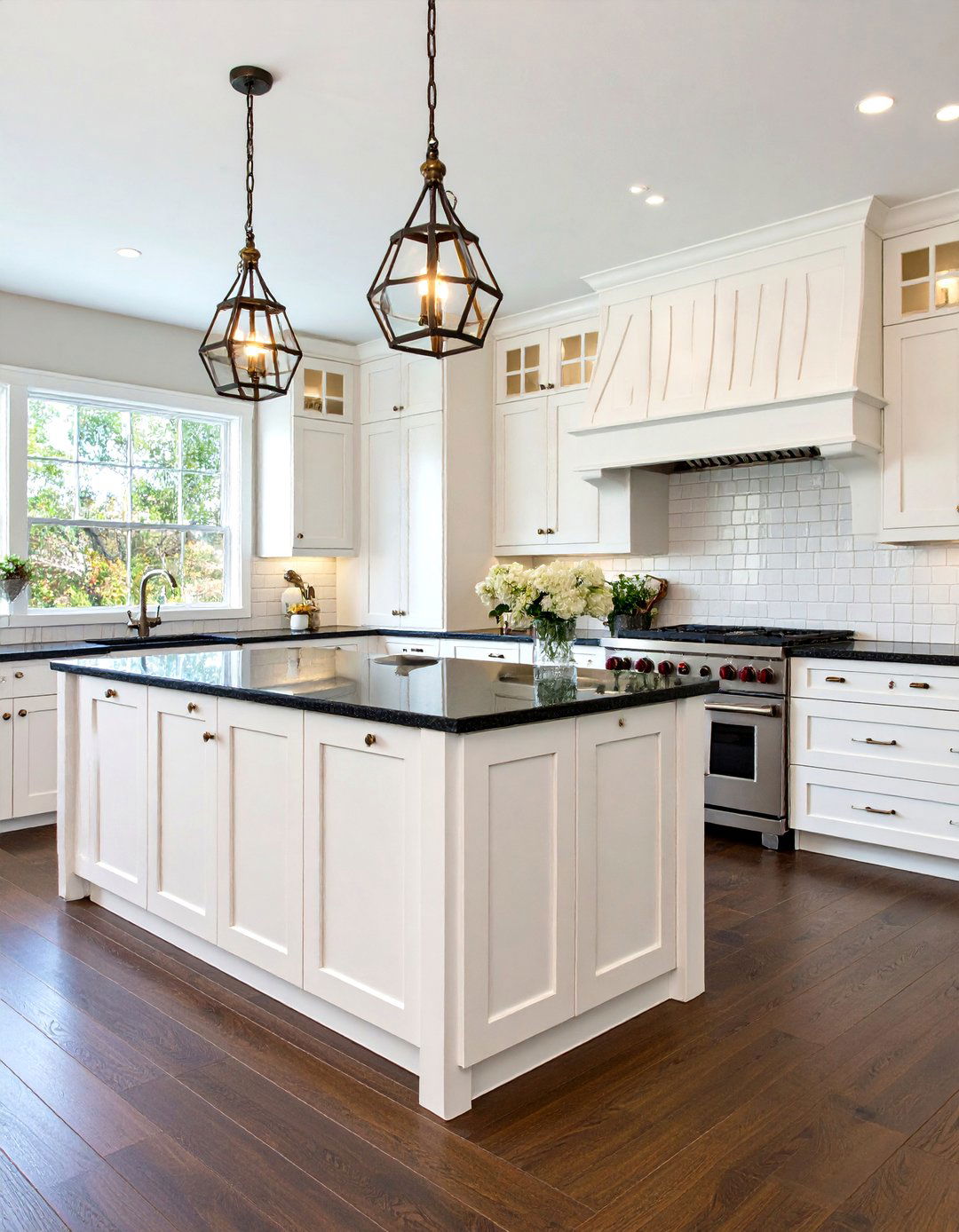
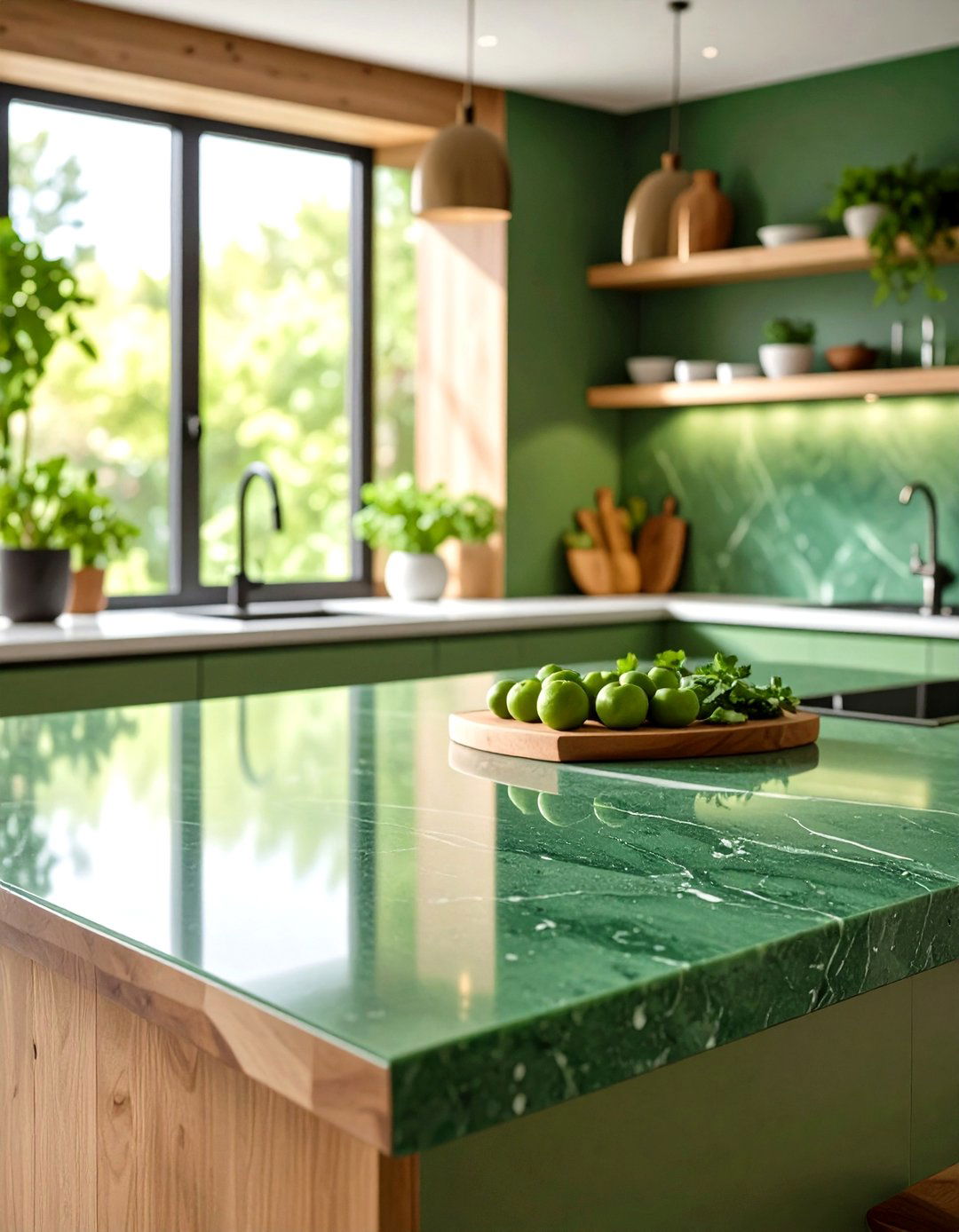
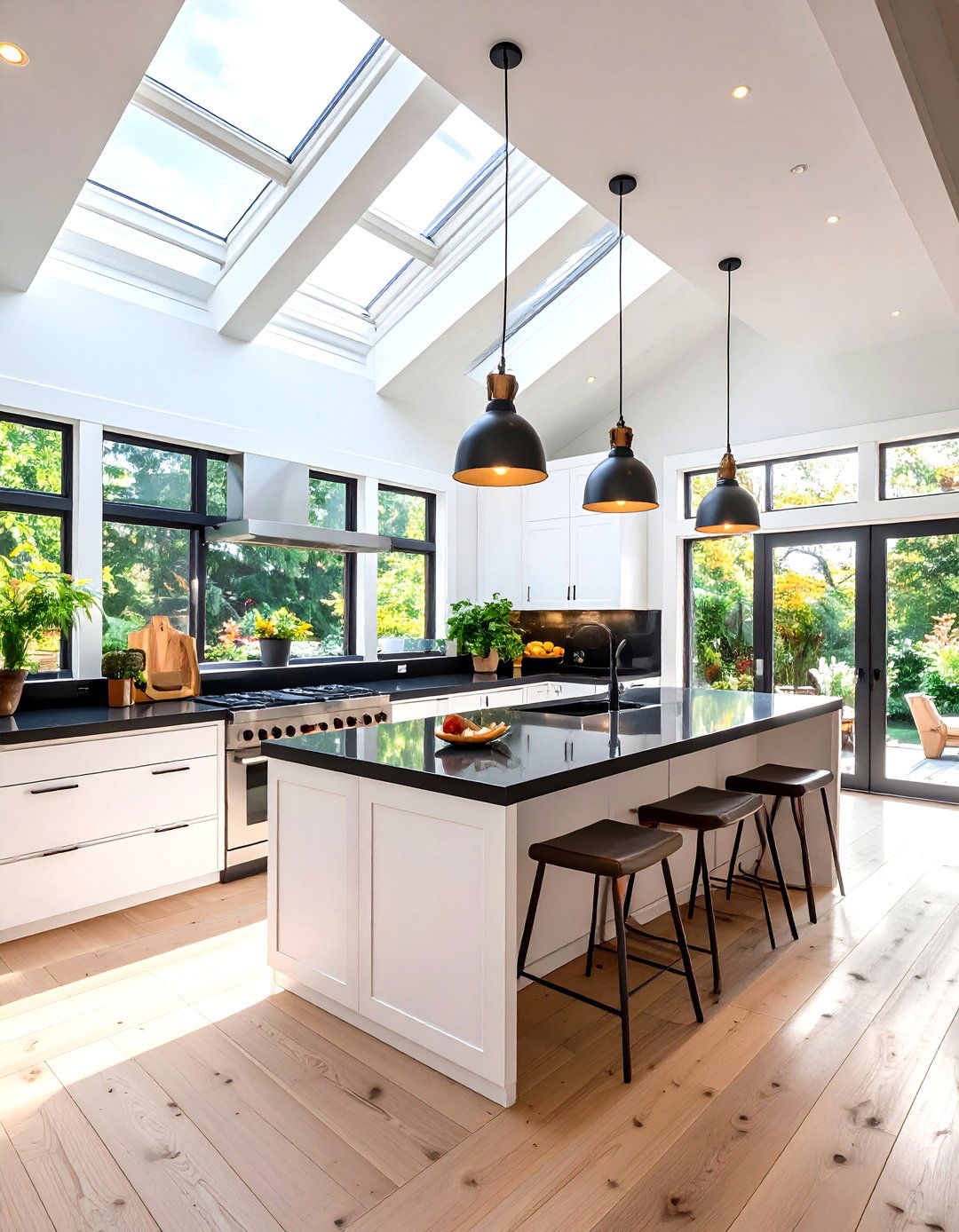

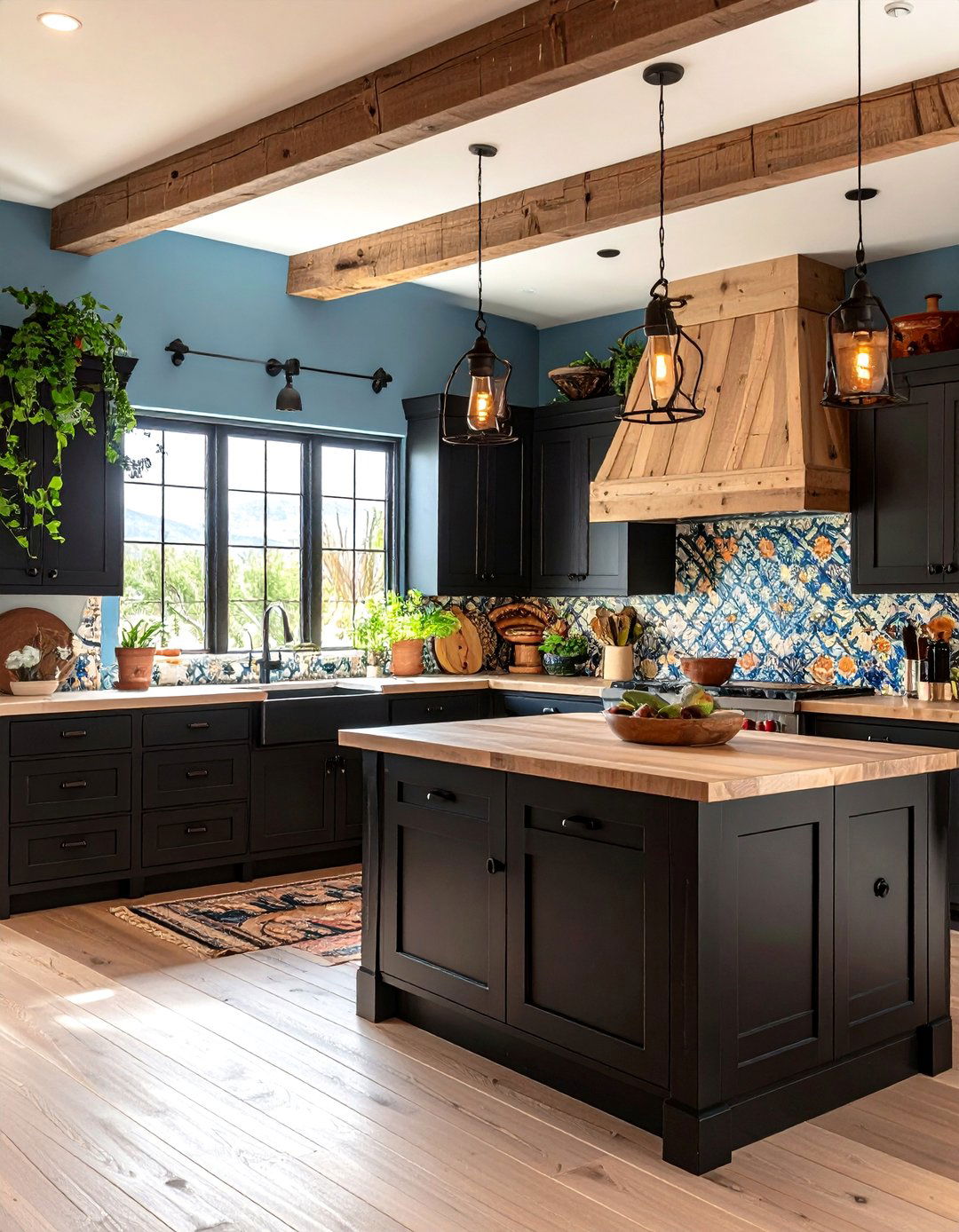
Leave a Reply